SUICIDE SOLUTION
The 10 Best Movie Suicides
8.
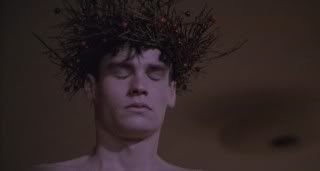
Neil Perry contemplates a change of career in Dead Poets Society (1989)
The 10 Best Movie Suicides
Nothing quite puts an exclamation point onto a dramatic scene than a character taking his or her own life. Too often used as a cheap, exploitative gimmick, a great filmmaker can use suicide to make the viewer contemplate their own mortality, while adding weight and heft to the situations which surround that character.
In the opinion of the Movie Feast crew, here are the ten best.
MAJOR spoilers ahead. You've been warned.
Little Bill's suicide in the final moments of 1979 is the most startling moment in the midst of a film that introduced me to the seedier elements of life; coke, sex, guns. Boogie Nights was a world changer for me, the kind of movie experience that re-arranges how you view the rest of filmic history. PT Anderson has always been one of my favorite filmmakers, but reviewing the first movie of his that I saw reaffirmed my love for his work. There Will Be Blood is his masterpiece, a mean-spirited picture that breathed smoke and left the history of this country in ashes. Boogie Nights was the first, though, and it remains my favorite. This seems to be Anderson in his purest form. The whimsical characters never get too grating, as they do in Punch-Drunk Love. Nor does the director's cynical edge take over completely, as it does in Blood's final minutes. Boogie Nights is a film about broken people living sad little lives, who after enduring great hardship and turmoil are allowed to sort of put some of the pieces back in plece. And the soundtrack kicks fuckin' ass! So many great moments, but the absolute emotional pinnacle of everything is William H. Macy blowing his brains out. Was this my first exploding head seen in a movie? It very well may have been. I watched this movie with the first girl I saw in her underwear. Maybe this contributes to the nostalgic air of the proceedings. Whatever. Little Bill's scene is breathtaking, bracing, a note-perfect end to a jubilant first half of a picture.
In the opinion of the Movie Feast crew, here are the ten best.
MAJOR spoilers ahead. You've been warned.
10.
Little Bill starts off the new year with a bang in Boogie Nights (1997)
Little Bill's suicide in the final moments of 1979 is the most startling moment in the midst of a film that introduced me to the seedier elements of life; coke, sex, guns. Boogie Nights was a world changer for me, the kind of movie experience that re-arranges how you view the rest of filmic history. PT Anderson has always been one of my favorite filmmakers, but reviewing the first movie of his that I saw reaffirmed my love for his work. There Will Be Blood is his masterpiece, a mean-spirited picture that breathed smoke and left the history of this country in ashes. Boogie Nights was the first, though, and it remains my favorite. This seems to be Anderson in his purest form. The whimsical characters never get too grating, as they do in Punch-Drunk Love. Nor does the director's cynical edge take over completely, as it does in Blood's final minutes. Boogie Nights is a film about broken people living sad little lives, who after enduring great hardship and turmoil are allowed to sort of put some of the pieces back in plece. And the soundtrack kicks fuckin' ass! So many great moments, but the absolute emotional pinnacle of everything is William H. Macy blowing his brains out. Was this my first exploding head seen in a movie? It very well may have been. I watched this movie with the first girl I saw in her underwear. Maybe this contributes to the nostalgic air of the proceedings. Whatever. Little Bill's scene is breathtaking, bracing, a note-perfect end to a jubilant first half of a picture.
- Travis Martin
David Cronenberg's body horror classic Videodrome has its share of odd moments. The Rick Baker special effects (from snuff films distending from television sets to surprisingly useful stomach-vaginas), James Woods' typically nervy performance, and Cronenberg's well-observed sense of kink have made the film a science fiction classic. The film follows Wood's character Max Renn as he discovers a pirated video broadcast called Videodrome that makes the viewer begin to hallucinate (and eventually develop brain tumors). Through it's influence, he begins to be able to externalize his hallucinations, morphing his body to allow him to battle against the fascist force creating the program. After killing Barry Convex (the show's producer), he learns that to completly defeat Videodrome he must abandon his old fleshy self. After watching an image of him shooting himself on a television screen (which explodes and showers intestines all over the place), Max puts a gun against his head before giving his immortal line of "Long live the new flesh" and pulling the trigger.
- Doug Tilley8.

Neil Perry contemplates a change of career in Dead Poets Society (1989)
Dead Poet's Society isn't exactly one of the movies that I watch on a regular basis but I love discussing Neil Perry's (Robert Sean Leonard) suicide because it is such a polarizing moment. Neil ends up taking his own life because of his father's (Kurtwood Smith) refusal to allow him to indulge in what he loves (i.e. Acting) in retaliation for an affront to Mr. Perry's authority. Neil's suicide is so heavily laden with symbolism that it is astounding as his weapon of choice is his father's revolver, as if to absolve Neil by implying that it is Mr. Perry who is actually pulling the trigger and murdering his own son.
The odd thing about the fate of poor Neil is that I've never seen suicide used as a tool used to signal rebirth before. In most movies I've seen, usually the act of taking one's life is wrapped in the misery usually associated with the dark path you have to be on even to consider harming yourself. However, Neil's suicide represents the spark that inspires the new guard to challenge the outdated trappings of the old guard. It is not necessarily a happy event, but it does take on a rather upbeat theme when theevents that transpire after Neil's death are weighed against the price the young man paid for the sake of his art and his identity.
The odd thing about the fate of poor Neil is that I've never seen suicide used as a tool used to signal rebirth before. In most movies I've seen, usually the act of taking one's life is wrapped in the misery usually associated with the dark path you have to be on even to consider harming yourself. However, Neil's suicide represents the spark that inspires the new guard to challenge the outdated trappings of the old guard. It is not necessarily a happy event, but it does take on a rather upbeat theme when theevents that transpire after Neil's death are weighed against the price the young man paid for the sake of his art and his identity.
- J.T.
7.
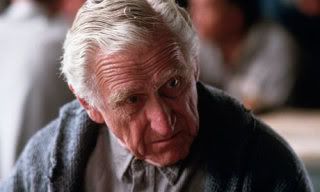
Brooks finishes the job in The Shawshank Redemption (1994)

Brooks finishes the job in The Shawshank Redemption (1994)
Brooks (James Whitmore) knows that there is no way he will make it in the outside world. In prison for decades, now being faced with release into a society that he does not know, he goes as far as to put a knife to a friend's throat in the hopes that someone will decide to keep him locked up until death.
After being talked down, he is sent packing. They place him in a halfway house and set him up with a job bagging groceries. It appears his only hobby is to feed the birds in the park. Finally, he can't stand the loneliness anymore and, after taking the time to carve "BROOKS WAS HERE" into the beam where he has hung his noose, he kicks the chair out from under his feet and hangs himself.
James Whitmore's performance in The Shawshank Redemption is perhaps the finest of his career, in a film full of great performances. It was sadly overlooked at awards time. If ever there was a case for a "career achievement, pat-on-the-back" Oscar win, this was it.
After being talked down, he is sent packing. They place him in a halfway house and set him up with a job bagging groceries. It appears his only hobby is to feed the birds in the park. Finally, he can't stand the loneliness anymore and, after taking the time to carve "BROOKS WAS HERE" into the beam where he has hung his noose, he kicks the chair out from under his feet and hangs himself.
James Whitmore's performance in The Shawshank Redemption is perhaps the finest of his career, in a film full of great performances. It was sadly overlooked at awards time. If ever there was a case for a "career achievement, pat-on-the-back" Oscar win, this was it.
- Isaac Weeks
One should be forgiven if, being familiar with samurai (especially as they’re represented in film), one has the impression that the road and courtyards of feudal Japan were littered with the disemboweled bodies of the disgraced and dishonored. Yes, we all know that ritual suicide existed, and that it really did happen, but certain films often give you the impression that samurai went around cutting open their stomachs willy-nilly, and I have a hard time believing that. I don’t believe in a universal human condition, but I do believe that humans share certain qualities, and the will to do yourself in for some minor infraction strikes me not as something that only belonged to a certain historic period, but is in fact something entirely alien.
Anyway, the point is, Masaki Kobayashi’s 1962 absolute fucking masterpiece of a film, Harakiri, treats the ritual like an inhumane tradition practiced and enforced by an authoritarian and chauvinistic system. It also treats it as a physically gruelling and brutal ordeal. In the film’s suicide scene, the young ronin Motome Chijiiwa (Akira Ishihama) is forced by a crowd of unfriendly samurai to not only commit sepukku, but to do it with his own wooden blade--a punishment for having sold the steel ones, something a true samurai should never do, supposedly. Chijiiwa begs for respite, but his pleas go unheeded. And so he takes his wooden blade, and tries to do himself in with it.
The first stabs don’t even break the skin; no, Chijiiwa has to brace the handle of the wooden sword against the ground and lean all of his weight against it. When the wood finally thrusts its way into his abdomen, he begs for the second to strike off his head, but the man won’t, not until Chijiiwa has slit his stomach “properly.” So Chijiiwa bites off his own tongue, hoping to bleed himself to death. Despite the fact that all of this is filmed in black and white--and the shots are sensitively chosen, so as not to accentuate the violence of the suicide--the scene is still gut-wrenching, driving home the terror of the situation and the cruelty of those who propped up such a system in the first place.
One should be forgiven if, being familiar with samurai (especially as they’re represented in film), one has the impression that the road and courtyards of feudal Japan were littered with the disemboweled bodies of the disgraced and dishonored. Yes, we all know that ritual suicide existed, and that it really did happen, but certain films often give you the impression that samurai went around cutting open their stomachs willy-nilly, and I have a hard time believing that. I don’t believe in a universal human condition, but I do believe that humans share certain qualities, and the will to do yourself in for some minor infraction strikes me not as something that only belonged to a certain historic period, but is in fact something entirely alien.
Anyway, the point is, Masaki Kobayashi’s 1962 absolute fucking masterpiece of a film, Harakiri, treats the ritual like an inhumane tradition practiced and enforced by an authoritarian and chauvinistic system. It also treats it as a physically gruelling and brutal ordeal. In the film’s suicide scene, the young ronin Motome Chijiiwa (Akira Ishihama) is forced by a crowd of unfriendly samurai to not only commit sepukku, but to do it with his own wooden blade--a punishment for having sold the steel ones, something a true samurai should never do, supposedly. Chijiiwa begs for respite, but his pleas go unheeded. And so he takes his wooden blade, and tries to do himself in with it.
The first stabs don’t even break the skin; no, Chijiiwa has to brace the handle of the wooden sword against the ground and lean all of his weight against it. When the wood finally thrusts its way into his abdomen, he begs for the second to strike off his head, but the man won’t, not until Chijiiwa has slit his stomach “properly.” So Chijiiwa bites off his own tongue, hoping to bleed himself to death. Despite the fact that all of this is filmed in black and white--and the shots are sensitively chosen, so as not to accentuate the violence of the suicide--the scene is still gut-wrenching, driving home the terror of the situation and the cruelty of those who propped up such a system in the first place.
- Ash
The Abominable Dr. Phibes is a masterpiece and is the very epitome of campy cinema. Everything about it screams wonderful excess from the dialogue to the scenery to the costumes and naturally, to the escalating mayhem resulting from Dr. Phibes's (Vincent Price) pursuit of poetic justice through creative vengence.
Even more astounding than the "Ten Biblical Plagues of Egypt" themed murders that Phibes commits throughout the movie is the rather bizarre way Dr. Phibes ends his life once he believes his mission is done. As if people being eaten alive by locusts or being crushed under gigantic frog masks wasn't over the top enough, Phibes keeps the bizarre deaths rolling and commits suicide by placing himself in a stone tomb with the corpse of his wife and then proceeds to drain the blood from his body and replace it with embalming fluid!
The final payoff is the ominous and ironic prologue from Inspector Harry Trout (Peter Jeffrey) that the stone tomb Phibes placed himself in alongside his dead wife represented Darkness, which was the last Biblical plague Egypt suffered. However, director Robert Fuest knew a cash cow when he saw one and naturally Dr. Phibes would escape the clutches of death itself and return to kill again
The Abominable Dr. Phibes is a masterpiece and is the very epitome of campy cinema. Everything about it screams wonderful excess from the dialogue to the scenery to the costumes and naturally, to the escalating mayhem resulting from Dr. Phibes's (Vincent Price) pursuit of poetic justice through creative vengence.
Even more astounding than the "Ten Biblical Plagues of Egypt" themed murders that Phibes commits throughout the movie is the rather bizarre way Dr. Phibes ends his life once he believes his mission is done. As if people being eaten alive by locusts or being crushed under gigantic frog masks wasn't over the top enough, Phibes keeps the bizarre deaths rolling and commits suicide by placing himself in a stone tomb with the corpse of his wife and then proceeds to drain the blood from his body and replace it with embalming fluid!
The final payoff is the ominous and ironic prologue from Inspector Harry Trout (Peter Jeffrey) that the stone tomb Phibes placed himself in alongside his dead wife represented Darkness, which was the last Biblical plague Egypt suffered. However, director Robert Fuest knew a cash cow when he saw one and naturally Dr. Phibes would escape the clutches of death itself and return to kill again
- J.T.
OK, so it’s 1973, and you’ve just filmed a movie where a little possessed girl speaks in tongues, projectile vomits, masturbates with a crucifix, and utters the immortal line: “Your mother sucks cocks in Hell.” How do you finish big? How do you live up to that build? Remember, CG is years and years away. No big computer effect is gonna do the heavy lifting for you.
William Friedkin’s solution is to have Father Karras (Jason Miller), in the ultimate selfless act, take the demon Pazuzu into himself, saving little Regan, and then fling his body down a flight of approximately 74 small, pointy stairs. The stunt man really takes one for the team on this, supposedly getting only ½ inch rubber mats on each step. I have no idea how they actually got the effect of the camera rolling down them. These “Exorcist Steps” are located at the end of M Street in Georgetown, and apparently are still quite the tourist attraction.
Had Father Karras done away with himself in a less spectacular fashion--hanging, gunshot, cyanide pill--the ending of the film could only be a let down. As it is, Father Karras’s suicide is one of those classic film moments, the sort of thing that justifies horror films as a legitimate genre.
OK, so it’s 1973, and you’ve just filmed a movie where a little possessed girl speaks in tongues, projectile vomits, masturbates with a crucifix, and utters the immortal line: “Your mother sucks cocks in Hell.” How do you finish big? How do you live up to that build? Remember, CG is years and years away. No big computer effect is gonna do the heavy lifting for you.
William Friedkin’s solution is to have Father Karras (Jason Miller), in the ultimate selfless act, take the demon Pazuzu into himself, saving little Regan, and then fling his body down a flight of approximately 74 small, pointy stairs. The stunt man really takes one for the team on this, supposedly getting only ½ inch rubber mats on each step. I have no idea how they actually got the effect of the camera rolling down them. These “Exorcist Steps” are located at the end of M Street in Georgetown, and apparently are still quite the tourist attraction.
Had Father Karras done away with himself in a less spectacular fashion--hanging, gunshot, cyanide pill--the ending of the film could only be a let down. As it is, Father Karras’s suicide is one of those classic film moments, the sort of thing that justifies horror films as a legitimate genre.
- Ash
It may take a viewing or two, or perhaps just a little thought, to realize how just bad Joe Dick (Hugh Dillon), the singer and front man of the seminal punk band Hard Core Logo, has it. Sure, you might think that Pipefitter and John Oxenburger have it worse--I mean, they’re just the rhythm section, for Christ’s sake--but these dudes are married, or at least have stable relationships. For them, and for Billy Tallent, the band’s successful guitarist, reuniting and touring with Hard Core Logo is a break from the real world. For Joe Dick, this isn’t a vacation. Everything else has been fake for him, but this, his band, this is real. More importantly, for Joe, the tour reunites him with Billy, his missing other half, a man that he quite obviously loves.
And then it all falls apart.
Joe Dick’s suicide is abrupt and terrifying, and it drives home how desperate and alone Joe has been all along. Standing outside of the last place Hard Core Logo will ever play, smiling vacantly into the camera, Joe Dick takes a drink, and in one movement pulls out a pistol and blows his brains out. Hard Core Logo, a film that is a fun sprint, and at times very humorous, ends with this body blow to its audience, forcing them to rethink everything that came before.
It may take a viewing or two, or perhaps just a little thought, to realize how just bad Joe Dick (Hugh Dillon), the singer and front man of the seminal punk band Hard Core Logo, has it. Sure, you might think that Pipefitter and John Oxenburger have it worse--I mean, they’re just the rhythm section, for Christ’s sake--but these dudes are married, or at least have stable relationships. For them, and for Billy Tallent, the band’s successful guitarist, reuniting and touring with Hard Core Logo is a break from the real world. For Joe Dick, this isn’t a vacation. Everything else has been fake for him, but this, his band, this is real. More importantly, for Joe, the tour reunites him with Billy, his missing other half, a man that he quite obviously loves.
And then it all falls apart.
Joe Dick’s suicide is abrupt and terrifying, and it drives home how desperate and alone Joe has been all along. Standing outside of the last place Hard Core Logo will ever play, smiling vacantly into the camera, Joe Dick takes a drink, and in one movement pulls out a pistol and blows his brains out. Hard Core Logo, a film that is a fun sprint, and at times very humorous, ends with this body blow to its audience, forcing them to rethink everything that came before.
- Ash
Despondent over being spurned by his step-sister, his personal failures and the collapse of his family, Richie cuts his hair and beard before whispering "I'm going to kill myself tomorrow". What follows is a disturbing, atypically violent suicide attempt set to Elliot Smith's "Needle In The Hay" (knowing that Smith himself committed suicide certainly adds to the dour tone) that becomes a significant turning point in The Royal Tenenbaums and marks a seriousness that director Wes Anderson usually avoids in his films. While the following hospital scenes are almost comical, this scene features the near-death of the film's most sympathetic character and is quite difficult to watch. It makes me wonder how a Wes Anderson drama (or, even more extreme, horror film) might look if he were to abandon his more whimsical tendencies.
Despondent over being spurned by his step-sister, his personal failures and the collapse of his family, Richie cuts his hair and beard before whispering "I'm going to kill myself tomorrow". What follows is a disturbing, atypically violent suicide attempt set to Elliot Smith's "Needle In The Hay" (knowing that Smith himself committed suicide certainly adds to the dour tone) that becomes a significant turning point in The Royal Tenenbaums and marks a seriousness that director Wes Anderson usually avoids in his films. While the following hospital scenes are almost comical, this scene features the near-death of the film's most sympathetic character and is quite difficult to watch. It makes me wonder how a Wes Anderson drama (or, even more extreme, horror film) might look if he were to abandon his more whimsical tendencies.
- Doug Tilley
I remember, as a lad, watching Full Metal Jacket with the family. Since my father had seen it before, he knew what was coming, so when Gomer Pyle was preparing for his final exit, I was told to cover my eyes. And, like a dutiful son, I did--but I could still hear what happened, and my mind filled in the rest. It was disturbing. Of course, as soon as I could, I watched the film without parental supervision, and the suicide was just as horrifying as I'd previously imagined. It's one of the first times I remember being genuinely upset watching a movie.
I am not one of those who sees the second half of Full Metal Jacket as a huge letdown from the first half, though I know that's a popular opinion. That being said, Pyle's suicide is such a powerful climax that the final scenes of the film can only suffer by comparison.
Pyle's was the most memorable to me because it is the most philosophical. Kubrick did a masterful job of showing just how dark of a place you have to be emotionally and mentally to do that to yourself.
1.
Pvt. Pyle goes apeshit in Full Metal Jacket (1987)
I remember, as a lad, watching Full Metal Jacket with the family. Since my father had seen it before, he knew what was coming, so when Gomer Pyle was preparing for his final exit, I was told to cover my eyes. And, like a dutiful son, I did--but I could still hear what happened, and my mind filled in the rest. It was disturbing. Of course, as soon as I could, I watched the film without parental supervision, and the suicide was just as horrifying as I'd previously imagined. It's one of the first times I remember being genuinely upset watching a movie.
I am not one of those who sees the second half of Full Metal Jacket as a huge letdown from the first half, though I know that's a popular opinion. That being said, Pyle's suicide is such a powerful climax that the final scenes of the film can only suffer by comparison.
- Ash
Pyle's was the most memorable to me because it is the most philosophical. Kubrick did a masterful job of showing just how dark of a place you have to be emotionally and mentally to do that to yourself.
- J.T.

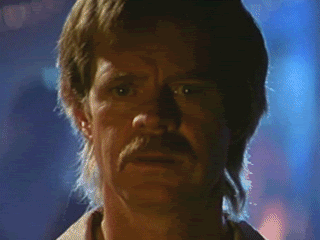
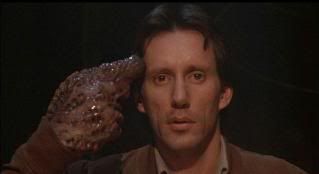
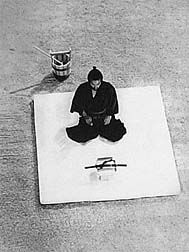
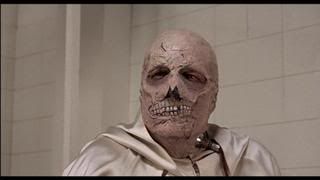



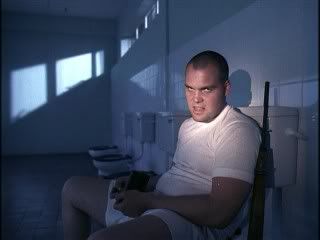









11 comments:
So THIS is what the hoopla is about. Whew! I thought you guys had taken a blood oath and somehow I was the only one who knew and no one believed me when I told them about your plans and I was racing against the clock to stop your self-destruction.
Yeah, my imagination got away from me for a moment.
Great calls on Shawshank and The Excorist. Brooks's death made me cry and Karras' demise made me question a lot of things about life.
It was a large amount of work, and it was sometimes difficult to work around each person's schedules, but i'm glad it came together like it did. I would have loved to have each video actually show the scene in question, but luckily there were enough out there to make it (I hope) a fun read.
The best thing about lists like this is that they are definitely worth arguing about. Memorable suicides from The Omen and Oldboy could easily make a list like this, and some of the choices made by people on the crew are not represented here.
It was a lot of fun, and i'm hoping we're able to do more unique lists like this in the future.
Oh, it is so nice to see Hard Core Logo on your list. The first time I watched it, the ending stunned me. It still shocks me. And each time I watch it I see something I missed the time before.
I think we came up with a pretty good list.
The debate was spirited, but good natured nonetheless. It's not shocking how much we went to bat for our particular moments.
As Doug mentioned, these scenes have a tendency to be more emotionally charged than most and really do add emphasis to a film that may already be your favorite.
And yeah, the Satan-influenced nanny hanging from The Omen (1976) was one of my first cinematic "holy shit" moments in my early horror watching career as a kid, so I definitely had strong opinions about it.
Pretty good list guys, but noticeably missing is Alice Munro's (Jodhi May) suicide in Last of the Mohicans. Not a word said, and Magua's (Wes Studi) uncomprehending eyes and shrug after she throws herself to her death are extremely powerful. Watch the way she circles over to the edge of the rock looking intently with despair and hatred into Magua's eyes as he motions for her to come to him. From this (what we thought) timid girl, this defiant act of power. Maybe Mann's finest hour, in fact.
Let's not forget Girl Interrupted.
I thought General Ripper's suicide in Dr. Strangelove was quite good, right after his speech about preserving his precious bodily fluids
Interesting. What were some of the runners up?
frankie five angels aka frank pentangelli in godfather 2
All men?
Irish one called Davin was good. It focuses on his friends and family afterwards.
https://www.youtube.com/watch?v=LtElIIJ1YuI
Post a Comment